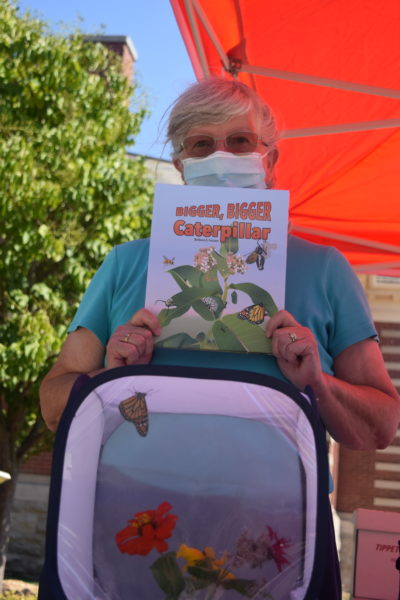
By Tristan Marks
NewsNow
“It’s amazing that an egg will fly away in 30 days,” said Barbara Fanson, who hosted an event at the Grimsby Public Library (GPL) last week all about the majestic monarch butterfly.
Fanson taught parents and kids alike about the 30-day life cycle of monarchs with living examples of eggs, caterpillars, chrysalises and fully grown butterflies. She also tagged the full-grown monarchs before releasing them, for research.
Fanson, an author who wrote and illustrated a children’s book titled, Bigger, Bigger Butterfly aimed at teaching younger kids about the species’ life cycle, said that tagging the butterflies as she releases them is an important way to learn more about the species migration habits, and how climate change has affected them.
The tags are available from Monarch Watch (MW), a Kansas-based non-profit dedicated to the conservation and research of monarchs.
Each one has a special tracking number on it as well as a URL for mwtag.org. Anyone who might catch or observe a monarch with one of these tags can go onto the MW site, and log the butterfly’s unique number with the location it was spotted.
“It’s fun, but it also tells us more about monarch, especially what routes they take to Mexico,” said Fanson.
She added that residents can help monarchs by planting at least one milkweed plant and nectar flower, such as goldenrod in their gardens.

